Faculty of Arts
Indigenous Studies
Restoring Indigenous Self-Determination: Theoretical and Practical Approaches
Edited by: Marc Woons, University of Leuven
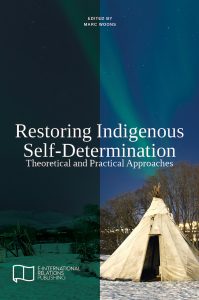 This Indigenous Studies text has been positively-reviewed and has been successfully adopted by other faculty. It covers concepts in Indigenous Self-Determination, from definitions to the UN declaration on Tibet.
This Indigenous Studies text has been positively-reviewed and has been successfully adopted by other faculty. It covers concepts in Indigenous Self-Determination, from definitions to the UN declaration on Tibet.
Includes: instructor resources, student resources, summaries.
Attribution: Restoring Indigenous Self-Determination: Theoretical and Practical Approaches edited by Marc Woons is licensed under a Creative Commons Attribution Non-Commercial (CC BY-NC) 4.0 International License.
Education
Knowing Home: Braiding Indigenous Science with Western Science, Book 1
By: Gloria Snively and Wanosts’a7 Lorna Williams, University of Victoria
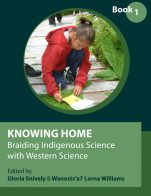 Since Indigenous peoples have developed time-proven approaches to sustaining both community and environment, Elders and young people are concerned that this rich legacy of Indigenous Science with its wealth of environmental knowledge and the wisdom of previous generations could disappear if it is not respected, studied and understood by today’s children and youth. This book takes a step forward toward preserving and actively using the knowledge, stories, and lessons for today and future generations, and with it a worldview that informs everyday attitudes toward the earth.
Since Indigenous peoples have developed time-proven approaches to sustaining both community and environment, Elders and young people are concerned that this rich legacy of Indigenous Science with its wealth of environmental knowledge and the wisdom of previous generations could disappear if it is not respected, studied and understood by today’s children and youth. This book takes a step forward toward preserving and actively using the knowledge, stories, and lessons for today and future generations, and with it a worldview that informs everyday attitudes toward the earth.
Attribution: Knowing Home: Braiding Indigenous Science with Western Science, Book 1 by Gloria Snively, Wanosts’a7 Lorna Williams is licensed under a Creative Commons Attribution-NonCommercial-ShareAlike 4.0 International License, except where otherwise noted.
Knowing Home: Braiding Indigenous Science with Western Science, Book 2
By: Gloria Snively and Wanosts’a7 Lorna Williams, University of Victoria
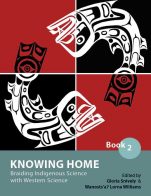 Indigenous Science examples, research, and curriculum models to inspire deep reflection regarding the under-representation of Aboriginal students in the sciences. It is intended that the rich examples and cases, combined with the resources listed in the appendices, will enable teachers and students to explore Indigenous Science examples in the classroom, and in addition, support the development of curriculum projects in home places.
Indigenous Science examples, research, and curriculum models to inspire deep reflection regarding the under-representation of Aboriginal students in the sciences. It is intended that the rich examples and cases, combined with the resources listed in the appendices, will enable teachers and students to explore Indigenous Science examples in the classroom, and in addition, support the development of curriculum projects in home places.
Includes: curriculum examples.
Attribution: Knowing Home: Braiding Indigenous Science with Western Science, Book 2 by Gloria Snively and Wanosts’a7 Lorna Williams is licensed under a Creative Commons Attribution-NonCommercial-ShareAlike (CC BY-NC-SA) 4.0 International License, except where otherwise noted.
Pulling Together: A Guide for Indigenization of Post-Secondary Education
By: Kory Wilson, Sybil Harrison, Janice Simcoe, Dawn Smith, Jennifer Stein, Asma-na-hi Antoine, Rachel Mason, Roberta Mason, Sophia Palahicky, Carmen Rodriguez de France, Bruce Allan, Amy Perreault, John Chenoweth, Dianne Biin, Sharon Hobenshield, Todd Ormiston, Shirley Anne Hardman, Louise Lacerte, Lucas Wright, Justin Wilson, Ian Cull, Robert L. A. Hancock, Stephanie McKeown, Michelle Pidgeon, Adrienne Vedan
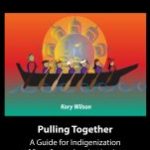 An open professional learning series developed for staff across post-secondary institutions in British Columbia. These guides are the result of the Indigenization Project, a collaboration between BCcampus and the Ministry of Advanced Education, Skills and Training. The project was supported by a steering committee of Indigenous education leaders from BC universities, colleges, and institutes, the First Nations Education Steering Committee, the Indigenous Adult and Higher Learning Association, and Métis Nation BC. These guides are intended to support the systemic change occurring across post-secondary institutions through Indigenization, decolonization, and reconciliation.
An open professional learning series developed for staff across post-secondary institutions in British Columbia. These guides are the result of the Indigenization Project, a collaboration between BCcampus and the Ministry of Advanced Education, Skills and Training. The project was supported by a steering committee of Indigenous education leaders from BC universities, colleges, and institutes, the First Nations Education Steering Committee, the Indigenous Adult and Higher Learning Association, and Métis Nation BC. These guides are intended to support the systemic change occurring across post-secondary institutions through Indigenization, decolonization, and reconciliation.
Attribution: Pulling Together: [Volume Name], [Volume authors] is licensed under a Creative Commons Attribution-NonCommercial 4.0 International License, except where otherwise noted.
Health Care
Northern and Indigenous Health and Health Care
By: Heather Exner-Pirot, University of Saskatchewan; Bente Norbye, UiT the Arctic University of Norway; and Lorna Butler, University of Saskatchewan
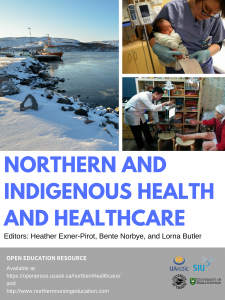 Northern health care is unique. The Circumpolar North is characterized by small communities in sparsely populated regions, separated by large distances and marked by distinct cultures. Weather – cold, snow, ice and wind – influences everything, including the practice of health care. With this volume, we hope to address a fundamental gap in nursing and health science education: a lack of textbooks or other resources that are focused on northern and Indigenous health care.
Northern health care is unique. The Circumpolar North is characterized by small communities in sparsely populated regions, separated by large distances and marked by distinct cultures. Weather – cold, snow, ice and wind – influences everything, including the practice of health care. With this volume, we hope to address a fundamental gap in nursing and health science education: a lack of textbooks or other resources that are focused on northern and Indigenous health care.
Includes: review questions.
Attribution: Northern and Indigenous Health and Health Care by Heather Exner-Pirot, Bente Norbye and Lorna Butler is licensed under a Creative Commons Attribution (CC BY) 4.0 International License.
If you have questions about Open Educational Resources in your subject area, please contact your subject liaison librarian.

